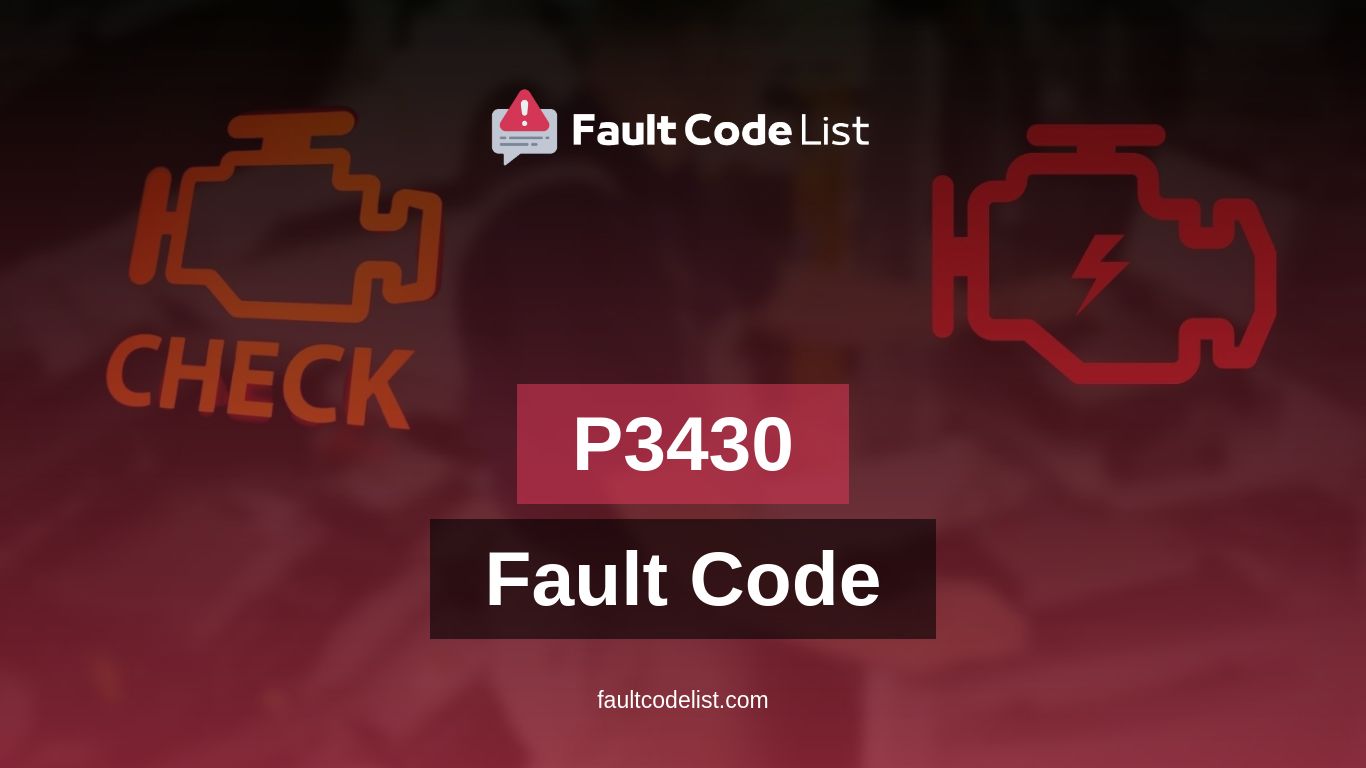When it comes to diagnosing and fixing automotive issues, fault codes serve as a valuable tool. Among the numerous fault codes that can appear, the P3430 code specifically relates to the Cylinder 4 Exhaust Valve Control Circuit Performance. Understanding the symptoms, causes, and solutions for this code is essential for efficient troubleshooting and repair. In this blog post, we will delve into the details of code P3430, providing you with valuable insights and solutions.
The P3430 code is associated with a performance issue in the exhaust valve control circuit of Cylinder 4. When this code is triggered, certain symptoms become evident in the vehicle’s performance. One of the primary indicators is a decrease in engine power and overall performance. The engine may struggle to accelerate or respond to driver inputs as expected. Additionally, rough idling, misfires, and reduced fuel efficiency may also be experienced. It is important to pay attention to these symptoms as they could point to an issue with the exhaust valve control circuit in Cylinder 4.

There are several potential reasons why the P3430 code may appear. These include:
- Malfunctioning exhaust valve control solenoid
- Damaged or corroded wiring or connectors associated with the exhaust valve control circuit
- A faulty Engine Control Module (ECM) or Powertrain Control Module (PCM)
- Problems with the exhaust valve sensor
- Issues with the engine’s camshaft or timing components
In order to resolve the P3430 code and restore the vehicle’s optimal performance, the following solutions can be explored:
- Inspect and test the exhaust valve control solenoid for proper functioning
- Check and repair any damaged or corroded wiring or connectors in the circuit
- Test the ECM or PCM for faults and replace if necessary
- Verify the condition of the exhaust valve sensor and replace if needed
- Examine the camshaft and timing components for any damage or misalignment
In summary, the P3430 code indicates a performance issue in the Cylinder 4 Exhaust Valve Control Circuit. Symptoms like decreased engine power and rough idling may be experienced. The code can be triggered due to a variety of reasons, including malfunctioning solenoids, damaged wiring, and faulty ECM or PCM. To resolve the issue, one needs to inspect and repair or replace the relevant components, such as the solenoid, wiring, ECM, or the exhaust valve sensor. By addressing the root cause, the vehicle’s performance can be restored, ensuring a smooth driving experience.
